| CLICK HERE FOR INDEX PAGE |
| |
| HARRY BECK 1902 TO 1974 |
V.Ryan © 2017-2019 |
| |
| YouTube Video - Harry Beck |
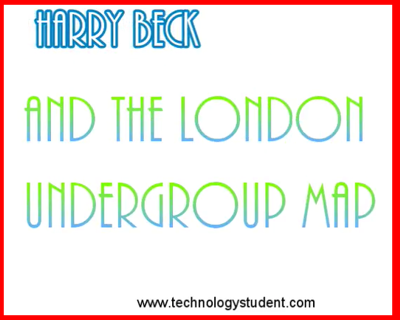 |
| |
| PDF FILE - CLICK HERE FOR PRINTABLE WORKSHEET |
| |
| PDF FILE - Harry Beck - Boxed Learning Exercise |
| |
| Harry Beck was an Engineering Technical Draftsman and he worked for the London Underground Signals Office. He developed an interest in the way rail transport maps were graphically presented, and especially those of the London Underground. Maps of the underground were usually geographic representations, although there were attempts by map designers to simplify the route maps, as seen in the 1930s map/poster below. But, even these were difficult to read/follow, especially as the underground network expanded. |
|
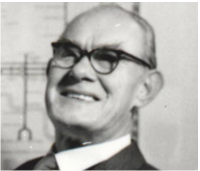 |
| Although simplified, the map is to a geographical scale, with the numerous stations laid out to reflect the real distances between them. However, colour coding had been introduced. |
| |
|
|
| |
| TYPICAL MAP OF THE LONDON UNDERGROUND (1930) BY F.H. STINGEMORE |
| |
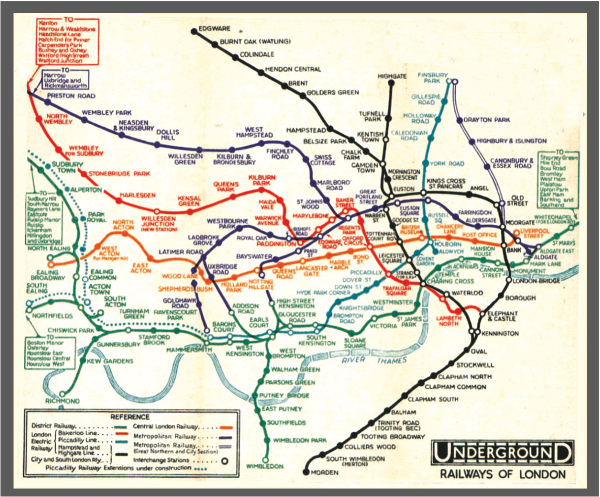 |
| |
| During the 1920s, George Dowe had developed linear maps, which were probably the precursor of map designs to follow, in particular the London Underground Map of Harry Beck. Dowes maps were situated inside trains and emphasised the stations on a particular line/route. They are easier to read than a geographical map, as only information regarding a particular route was displayed. An example can be seen below. |
| |
|
|
| |
| LINEAR MAP BY GEORGE DOWE |
| |
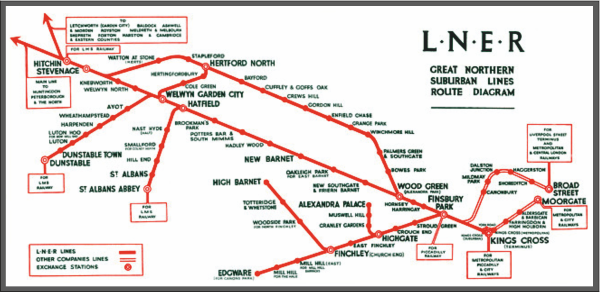 |
| |
In 1930, Beck worked on a style of ‘topological’ map, that would eventually become the standard graphical method of presenting maps, around the world. He was interested in producing a functional map that only conveyed information needed by passengers. Only stations and routes were displayed, in a straightforward manner, making the map easy to read ad understand.
The new map was designed in Beck’s own time and without a commission from the London Passenger Transport Board. His original sketch was drawn in a school exercise book, whilst he was ‘laid off’ during an economy drive by his employers.
At first, the London Passenger Transport Board turned down the map, as they considered it unusual and far too revolutionary. However, in 1932, due to Harry’s persistence and belief in his map, the Board were persuaded to make a limited number of copies, which were distributed at one of the central stations. It was well received by passengers, which lead to further batches being printed. |
| |
|
|
| |
| Beck’s map differed to those that had come before it. Beck realised that the distance between the stations was not important, as passengers were most interested in the order of the stations and how they connected to each other. This is seen particularly in the busy central area of the map, which he expanded to show more detail. The stations on the periphery of the geographical map are drawn closer to the centre. This allowed the map to be produced to a manageable overall size. Therefore, Becks map is in the style of a topological map, but it is not to a strict scale, as distances between stations are not accurate. This ensures that all the stations fit on the map. |
| |
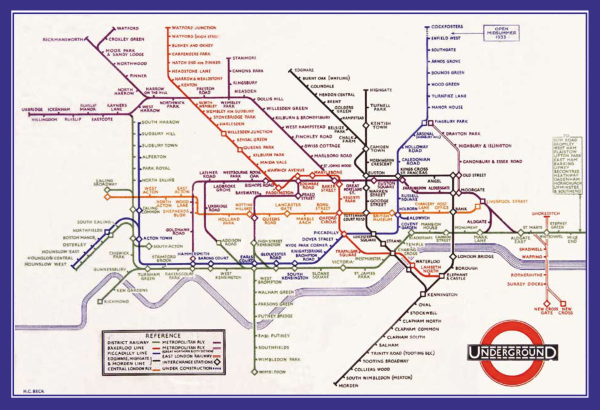 |
| |
| Beck’s London Underground Map, is now regarded as an iconic design, as it has inspired other map layouts throughout the world. The style of map that he introduced has been adapted for a vast range of diagrammatic presentations. It set a high benchmark for other map designers to follow and it is a style. The map provides all the necessary information required by a traveller and no unnecessary detail or decoration. It is strictly functional and yet can be regarded as piece of art, reflecting a modernist philosophy. |
| |
| |
| |
| CLICK HERE FOR PRODUCT DESIGN INDEX PAGE |
| |
|
| |
|




